1lumen selects and reviews products personally. We may earn affiliate commissions through our links, which help support our testing.
NEXTORCH L10 Max review
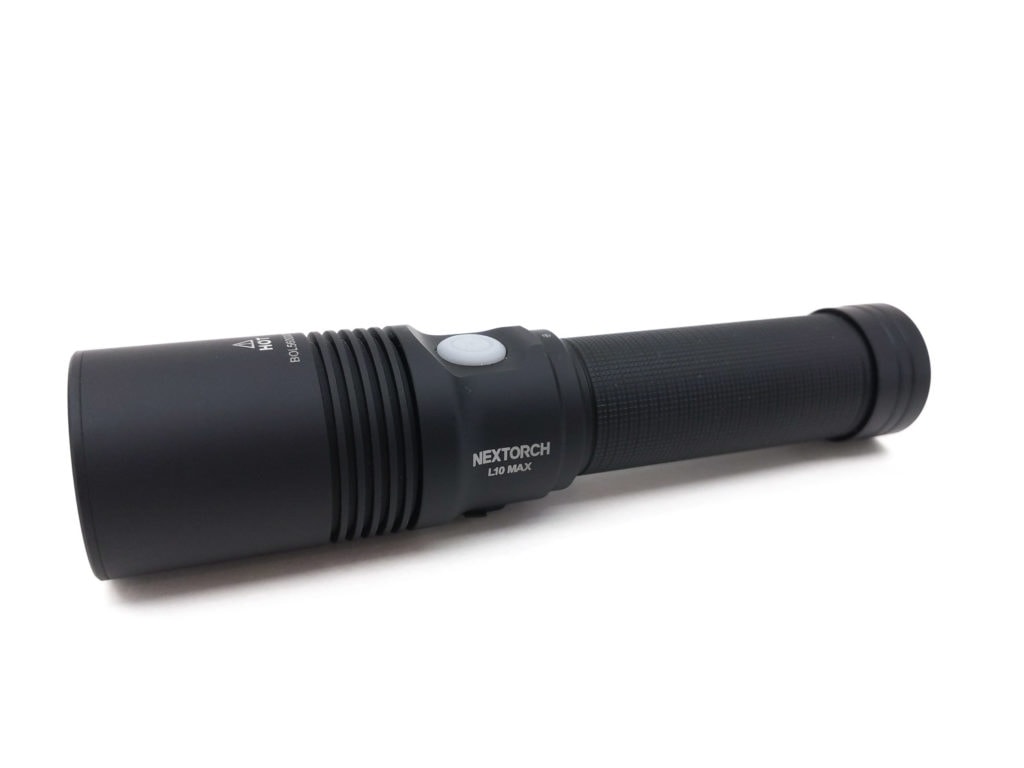
NEXTORCH L10 Max specifications
| Brand/model | NEXTORCH L10 Max |
|---|---|
| LED/LEP | LEP |
| Lumens | 400 lm |
| Beam intensity | 360,000 cd |
| Battery config. | 1*21700 |
| Material | Aluminum |
| Modes | 4 |
| Blinkies | Strobe |
| Reflector | N/A |
| Waterproof | IPX7 |
| Review date | September 2021 |
Introduction:
I’m new to NEXTORCH , I’ve never actually had one of their flashlights let alone LEP. NEXTORCH , however, isn’t a stranger to making LEP flashlights. Last year Marco reviewed both their NEXTORCH T7L and NEXTORCH T10L models. Those LEPs earned fairly good marks, so I’m anxious to see what NEXTORCH has in store with their new L10 Max model.
Package quality.
The NEXTORCH L10 Max arrived in a fairly standard looking package. The paperboard board is adorned with a couple of images of the light itself and several product feature descriptions and specifications tables. Inside the box was:
- NEXTORCH L10 Max
- 4800 mAh 21700 battery
- USB-A to USB-C charging cable
- Spare o-rings
- Lanyard
- Manual
One thing I found odd/humorous about the packaging: nowhere does it mention “laser” or “LEP”. NEXTORCH strategically went with calling it a “white light emitter”. I have a feeling that this may be intentional in order to help it slide through any border crossings where the word “laser” may raise a few eyebrows.
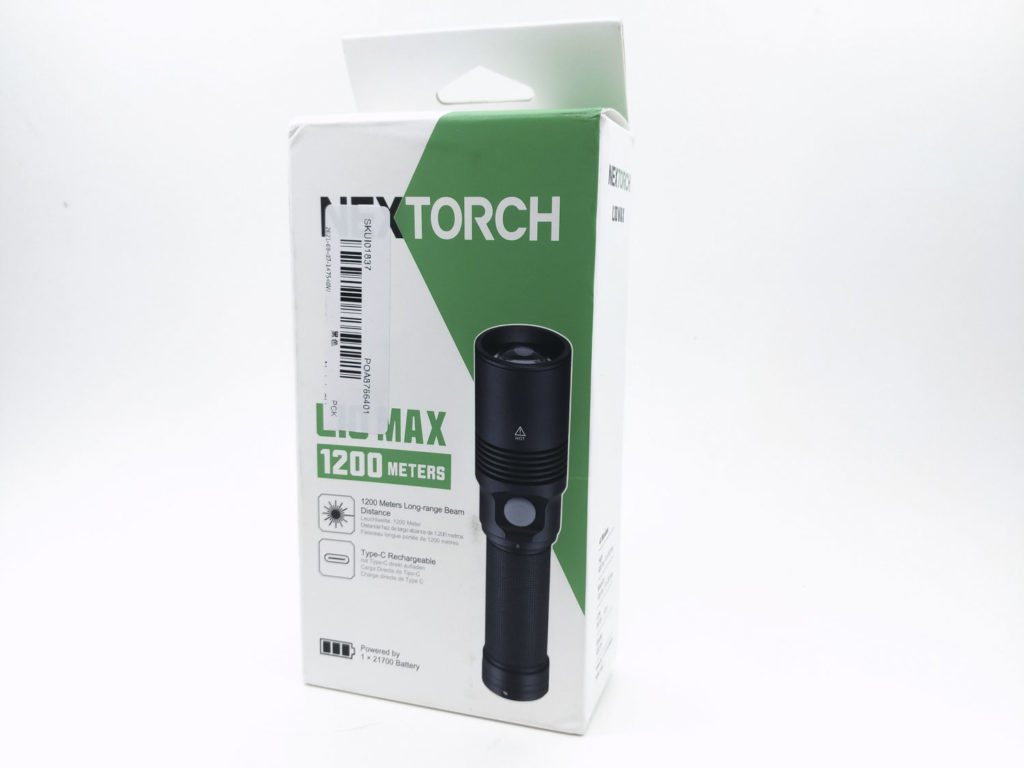
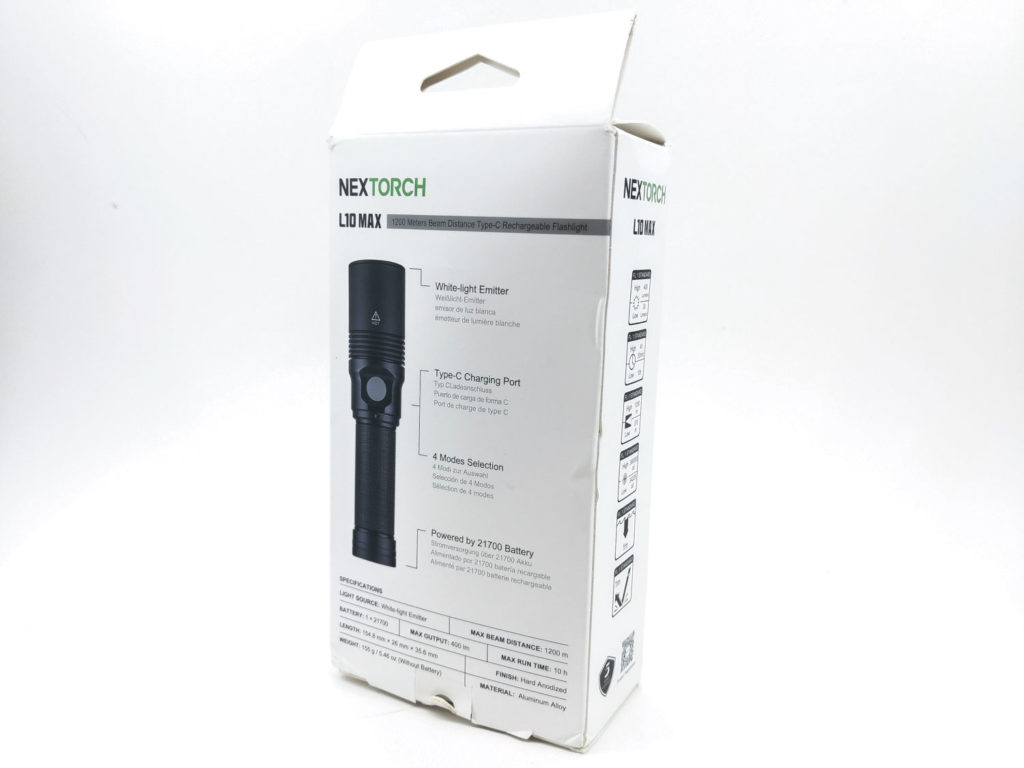
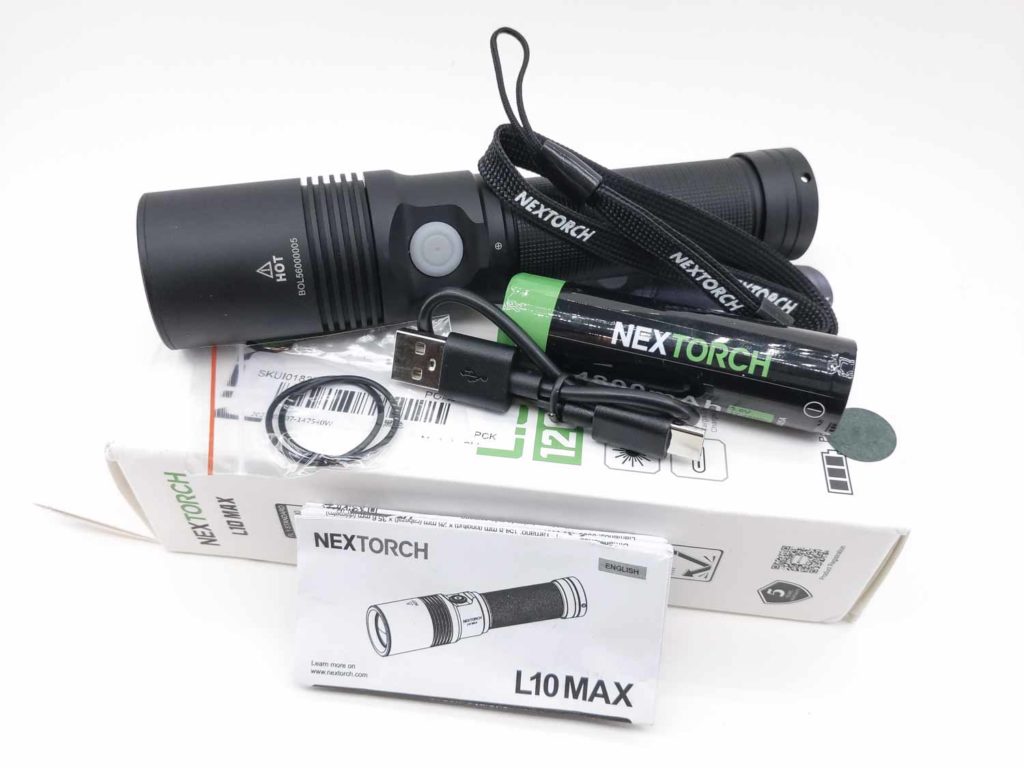
Flashlight in use
I knew that LEP flashlights are typically a bit larger than their LED counterparts so it was no surprise to see that the L10 Max is longer than most of my 21700 flashlights. Length aside, the L10 Max feels pretty “normal” for a 21700 light. There is a single e-switch that is located on a flat area of the side of the head, making it pretty easy to find even in a dark room.
The body of this NEXTORCH is very round with nothing to stop it from rolling off a table, so be careful with that. The tail is very flat and so the light can easily tail-stand if you wanted to do that for some reason (an LEP wouldn’t be my first choice for this task). The tail also has a single hole for the lanyard, which means part of the lanyard would need to feed out the bottom of the tailcap, hindering the tail-stand capabilities a bit. There is not a clip with L10 Max. I would have liked to have seen one included, but it’s not a deal breaker for me.
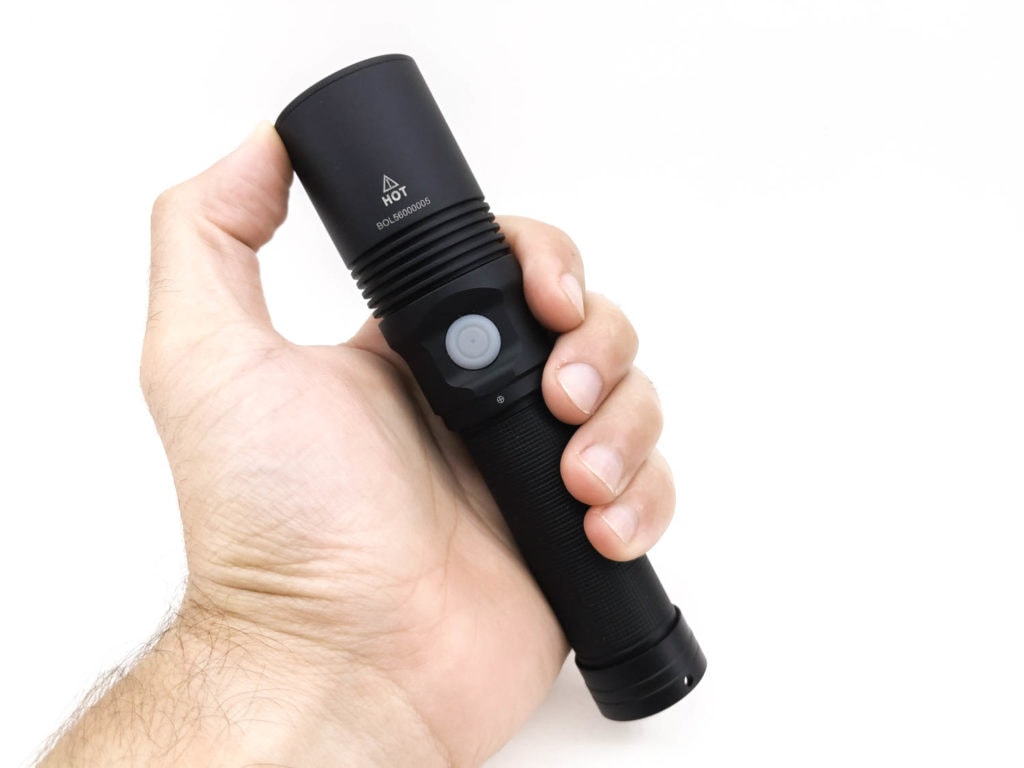
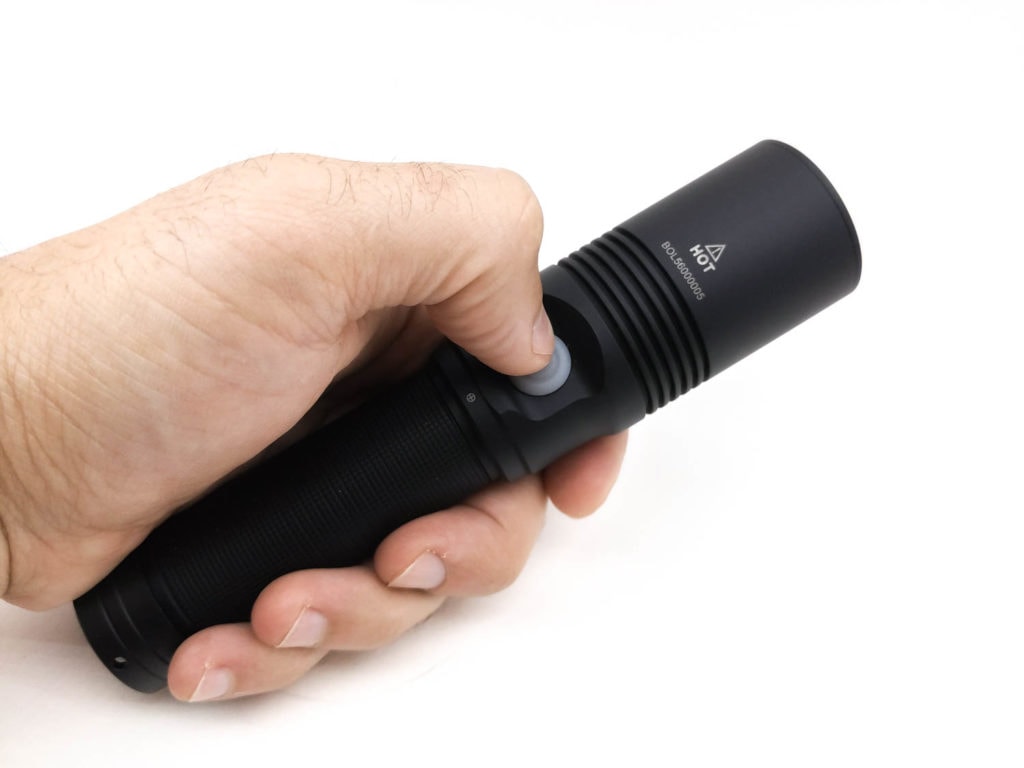
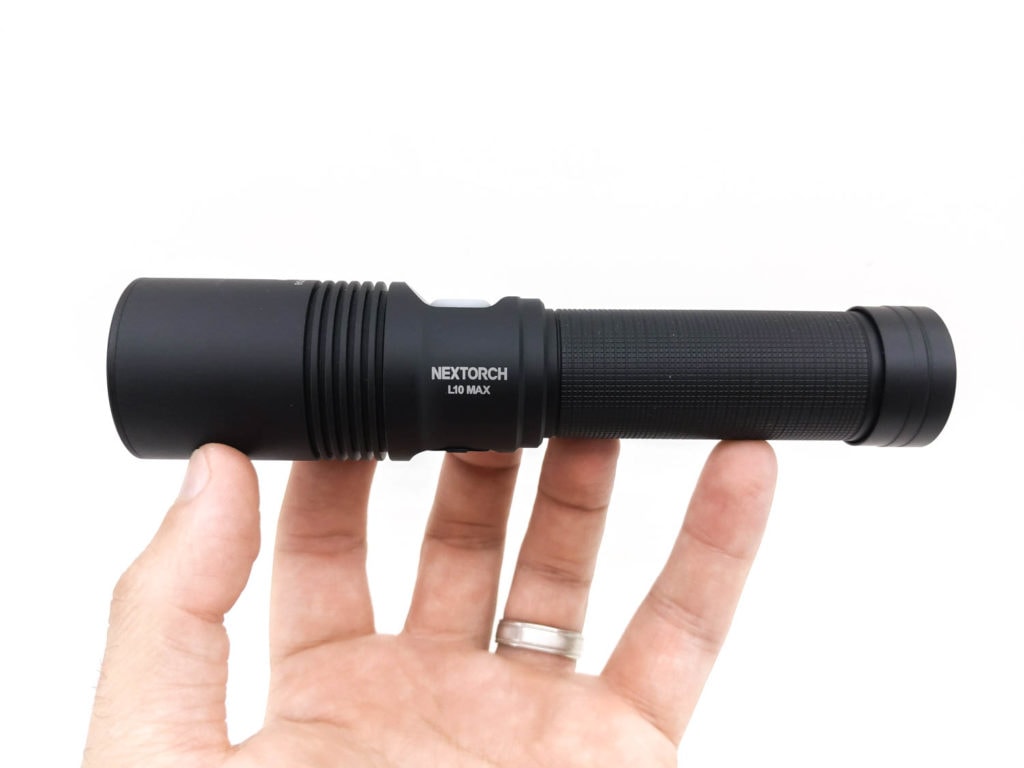
Build Quality, and Warranty
When I first opened the box of the NEXTORCH L10 Max, I was not prepared for what I saw. Having never owned a NEXTORCH before, and based on some of the product images I saw online, I expected the anodizing to be shiny and cheap looking. Nothing could be farther from the truth. It’s a very pleasant matte anodizing, almost chalky. It somewhat reminds me of my black Emisar D1S. While NEXTORCH doesn’t specify a rating for the finish, they do say it’s “hard anodized”. The flashlight is machined from 6061-T6 aluminum alloy.
The threads for the tailcap are anodized and triangular, but very clean and smooth. The cooling fins on the head are nicely cut and while they don’t appear to be chamfered, they are smooth to the touch. The knurling around the battery tube consists of very small squares. They add a nice visual but don’t add much to the slip resistance. Overall though, the matte anodizing is a little grippy by itself and never gave me cause for concern of it slipping out my hand. The machining and anodizing seem to be top notch.
Warranty: NEXTORCH has a 15 day replacement policy. There is a 5 year repair coverage. Accessories are not covered except for batteries which are covered for 1 year. In the event that an issue arises that is not covered under the warranty, NEXTORCH can arrange to have the product repaired for a reasonable fee.
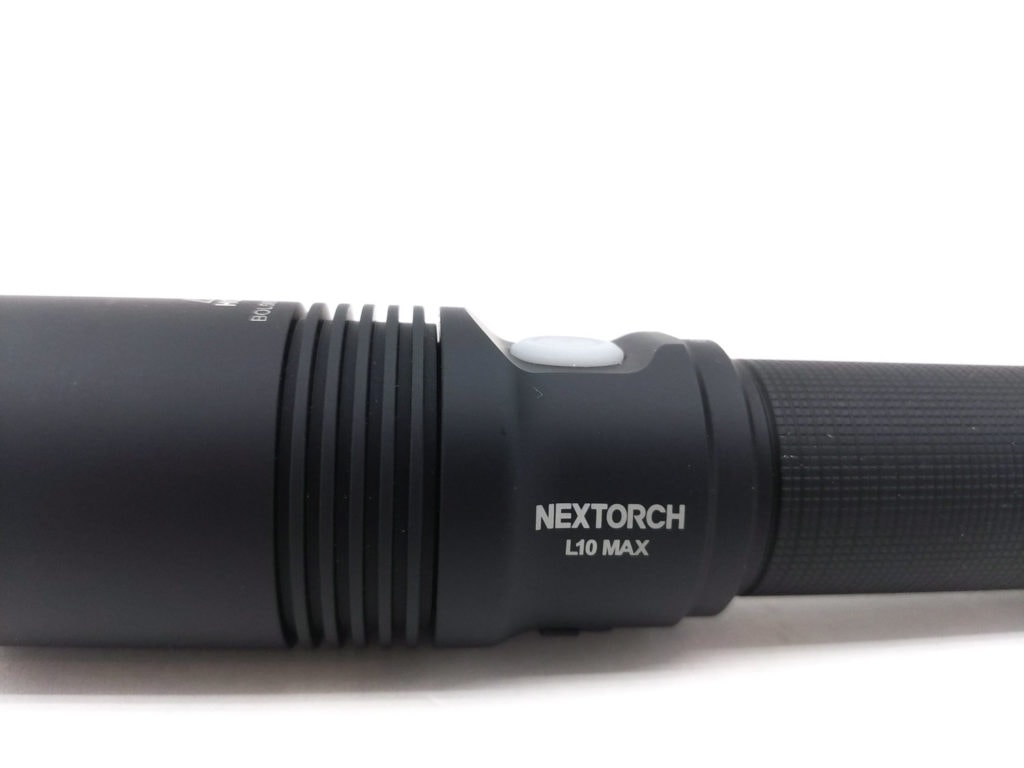
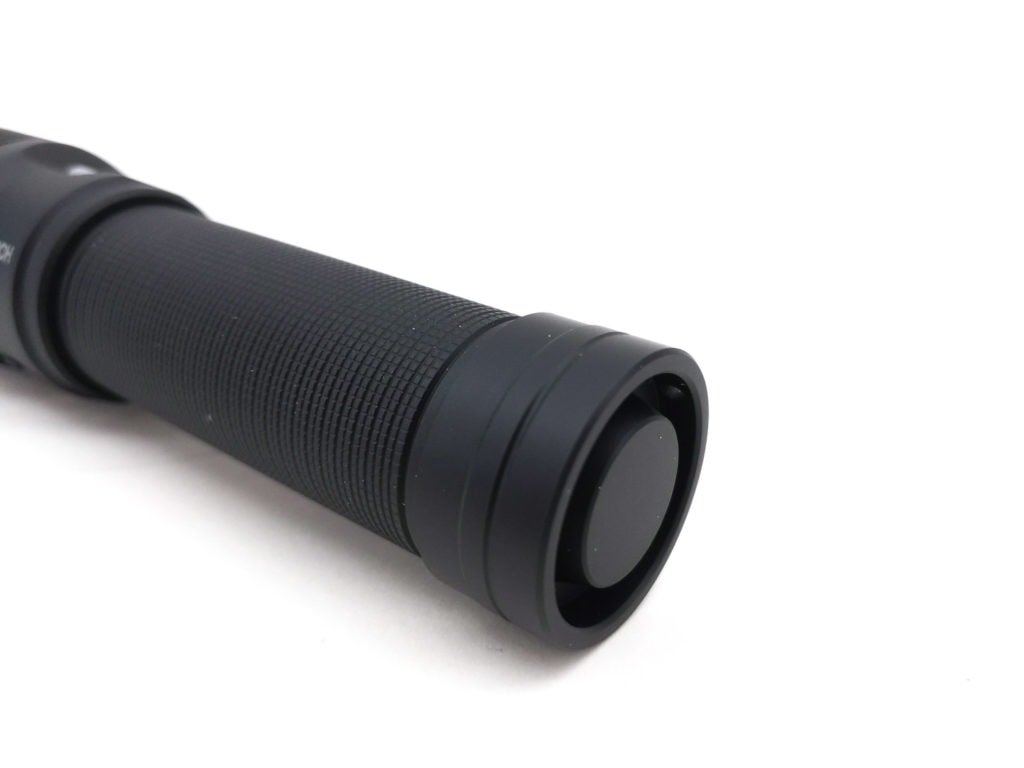
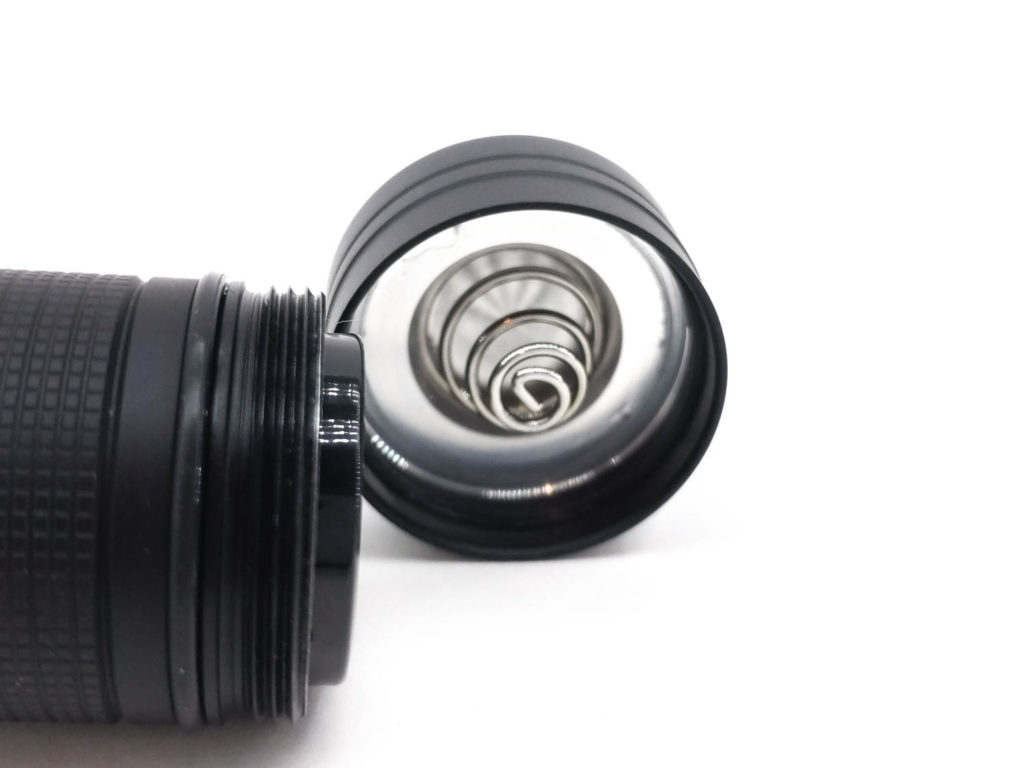
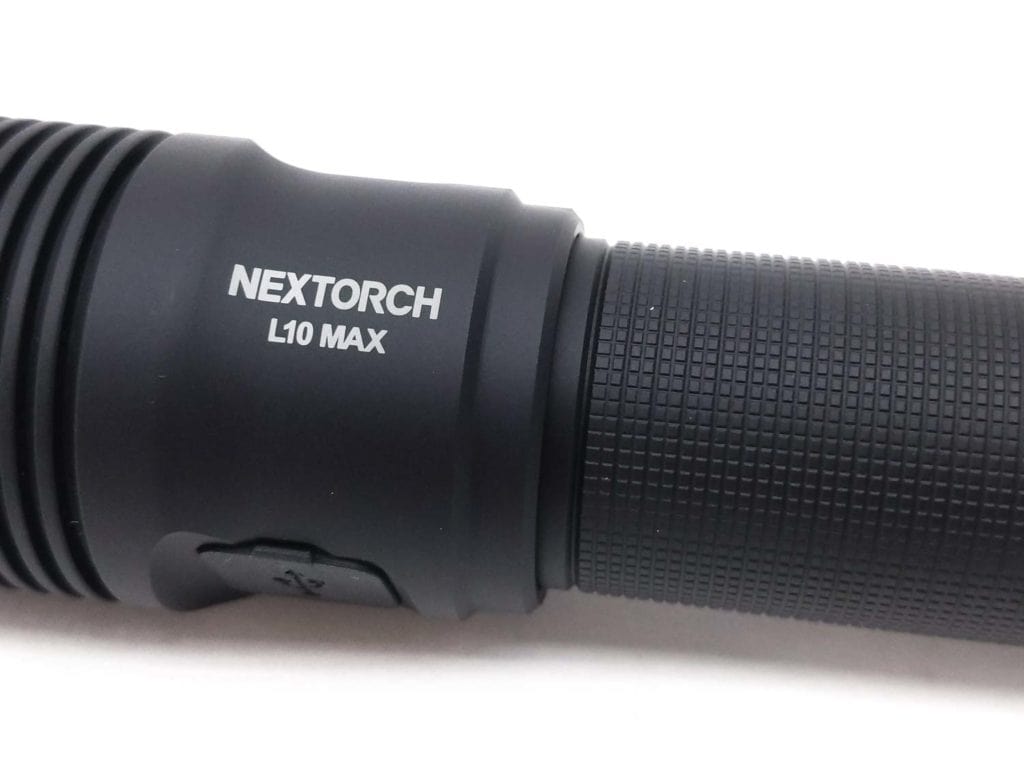
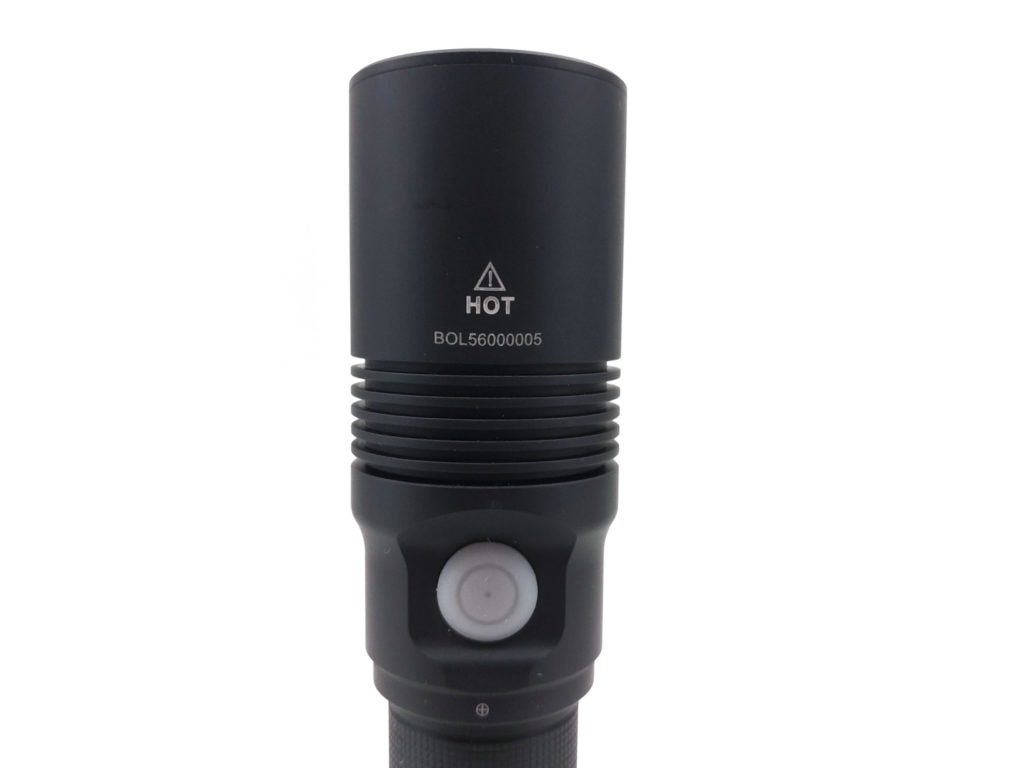
LEP, Lens, Bezel, and Reflector
The L10 Max doesn’t actually have an LED. Rather, this is an LEP light which stands for Laser Excited Phosphor. Essentially, a blue laser is shined on a phosphor layer which then reflects a white-ish light back out of the front of the flashlight. This arrangement of laser, lenses, and phosphor take up a bit of room which is why this LEP is longer than your typical LED flashlight. But it also throws a heckuva lot farther, as we’ll see later.
As much as I like a nice stainless steel bezel, the NEXTORCH L10 Max has a plain, smooth, black anodized bezel. Centered in that bezel is a convex lens over the LEP module. Everything seems pretty well glued together so I stopped my exploration at peeking through this lens. Essentially all you can see is a bit of phosphor.
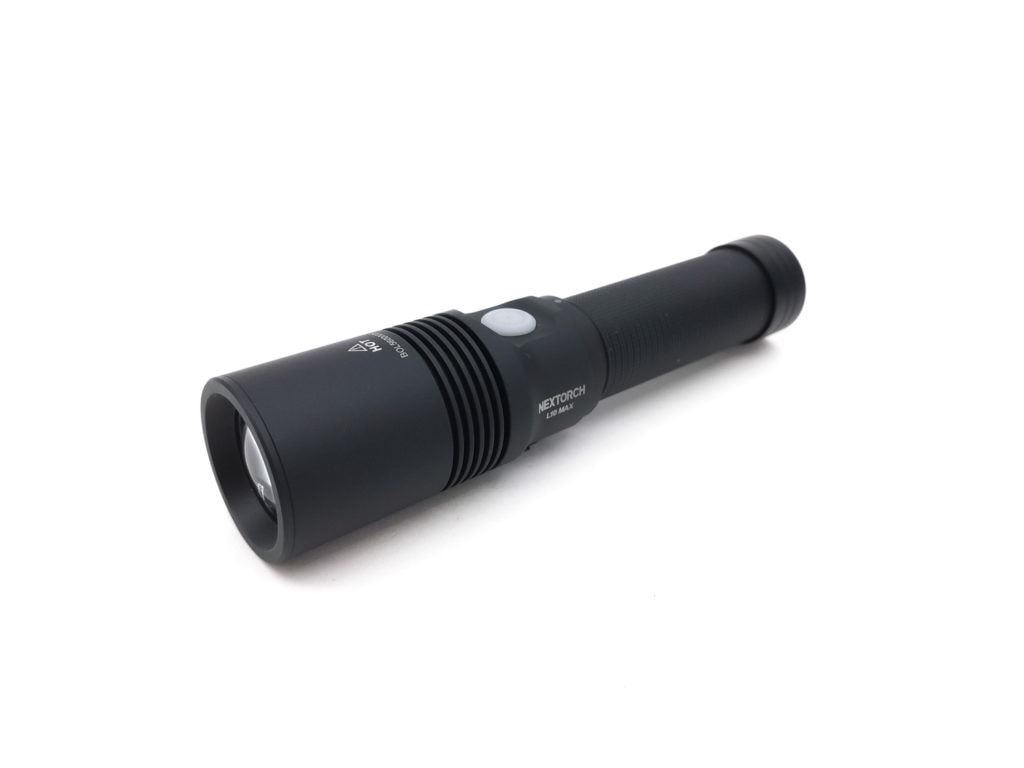
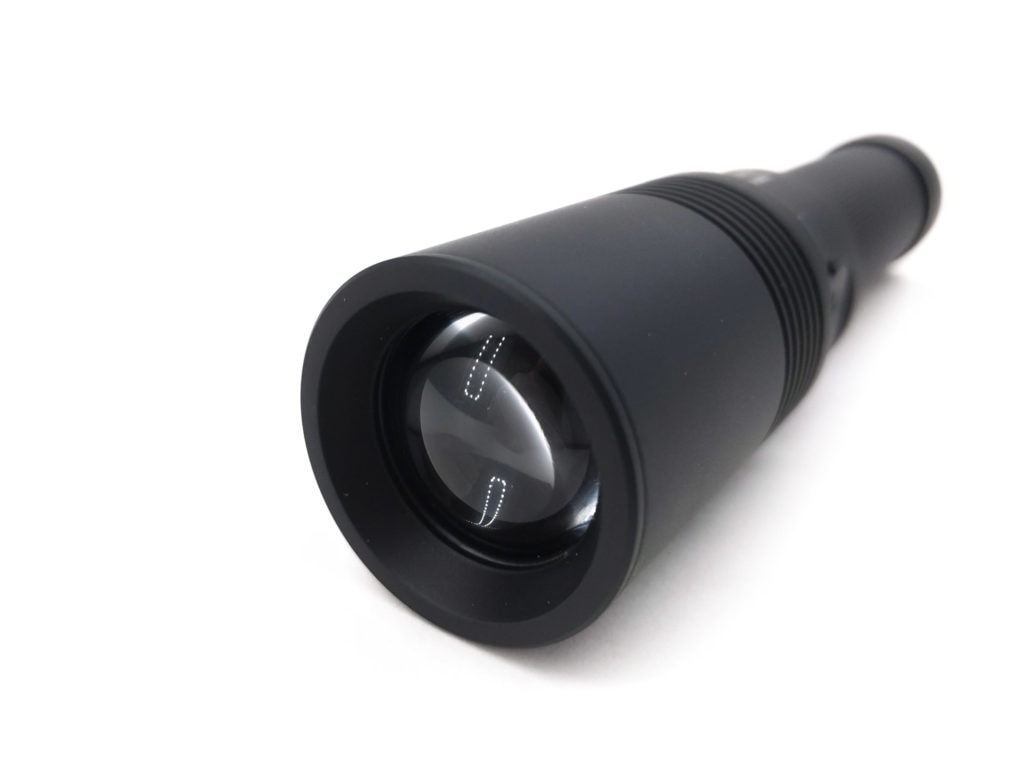
Dimensions and size comparison
- Length: 154.8 mm / 6.1 inches
- Head diameter: 35.6 mm / 1.4 inches
- Body diameter: 26.0 mm / 1.0 inches
Weight:
- Without cells: 161 grams / 5.7 oz
- With cells: 234 grams / 8.3 oz
Flashlight size comparison with its competition
With common 21700 lights, left to right: Astrolux EC01, NEXTORCH L10 Max, Sofirn SP35
Long-distance throwers, left to right: FireFlies T9R, Astrolux FT03S Copper, NEXTORCH L10 Max, Brinyte B158
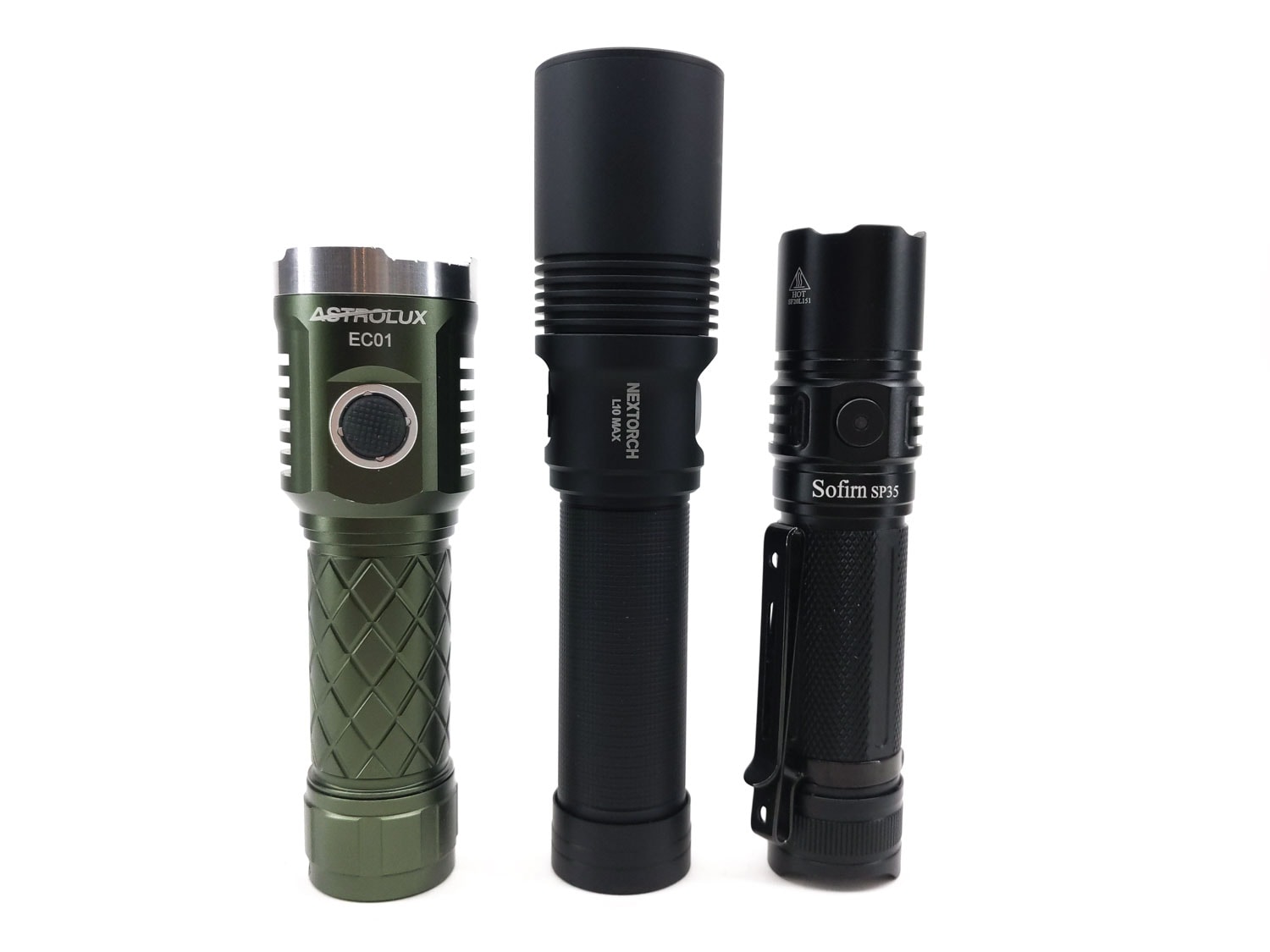
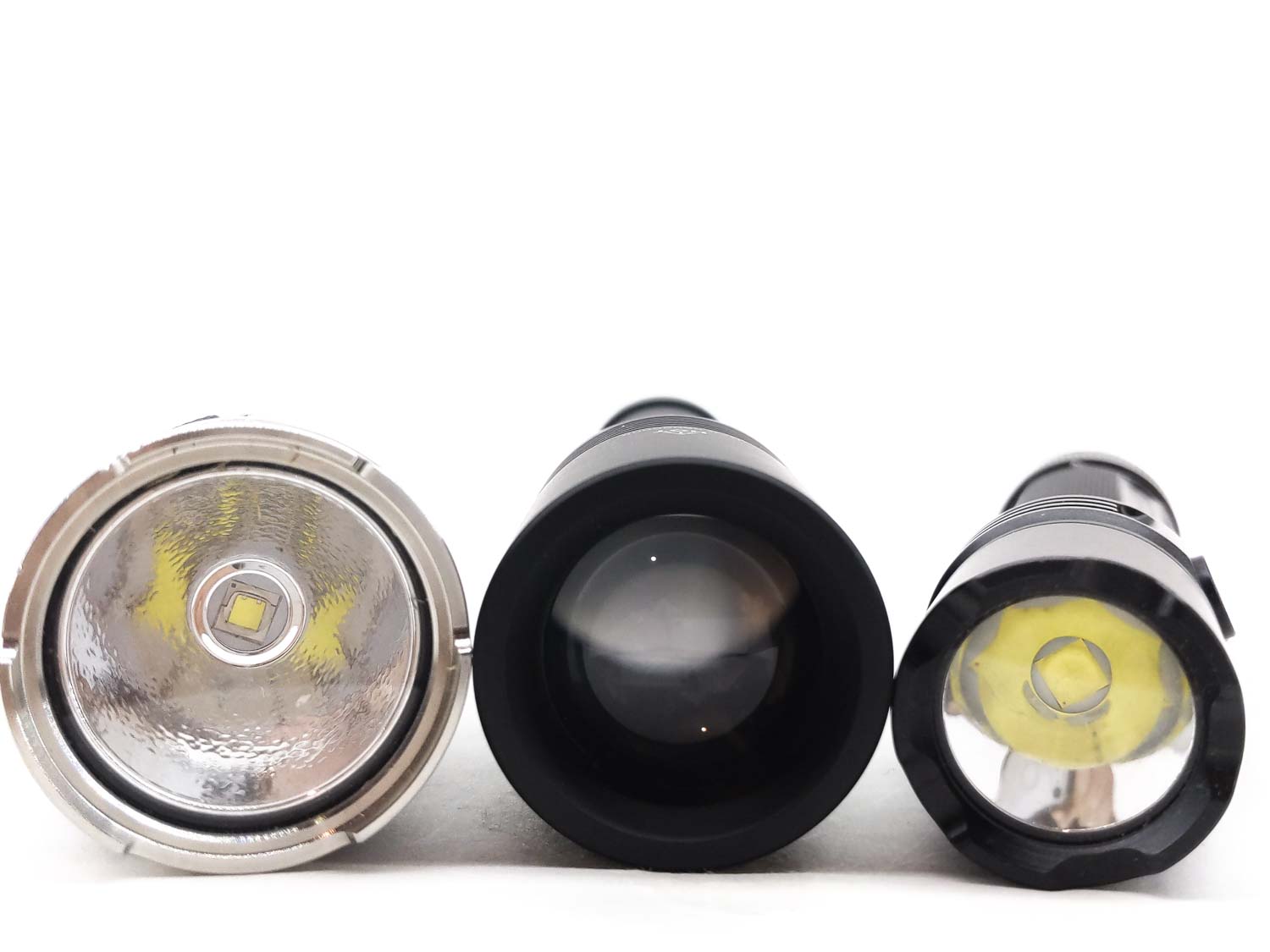
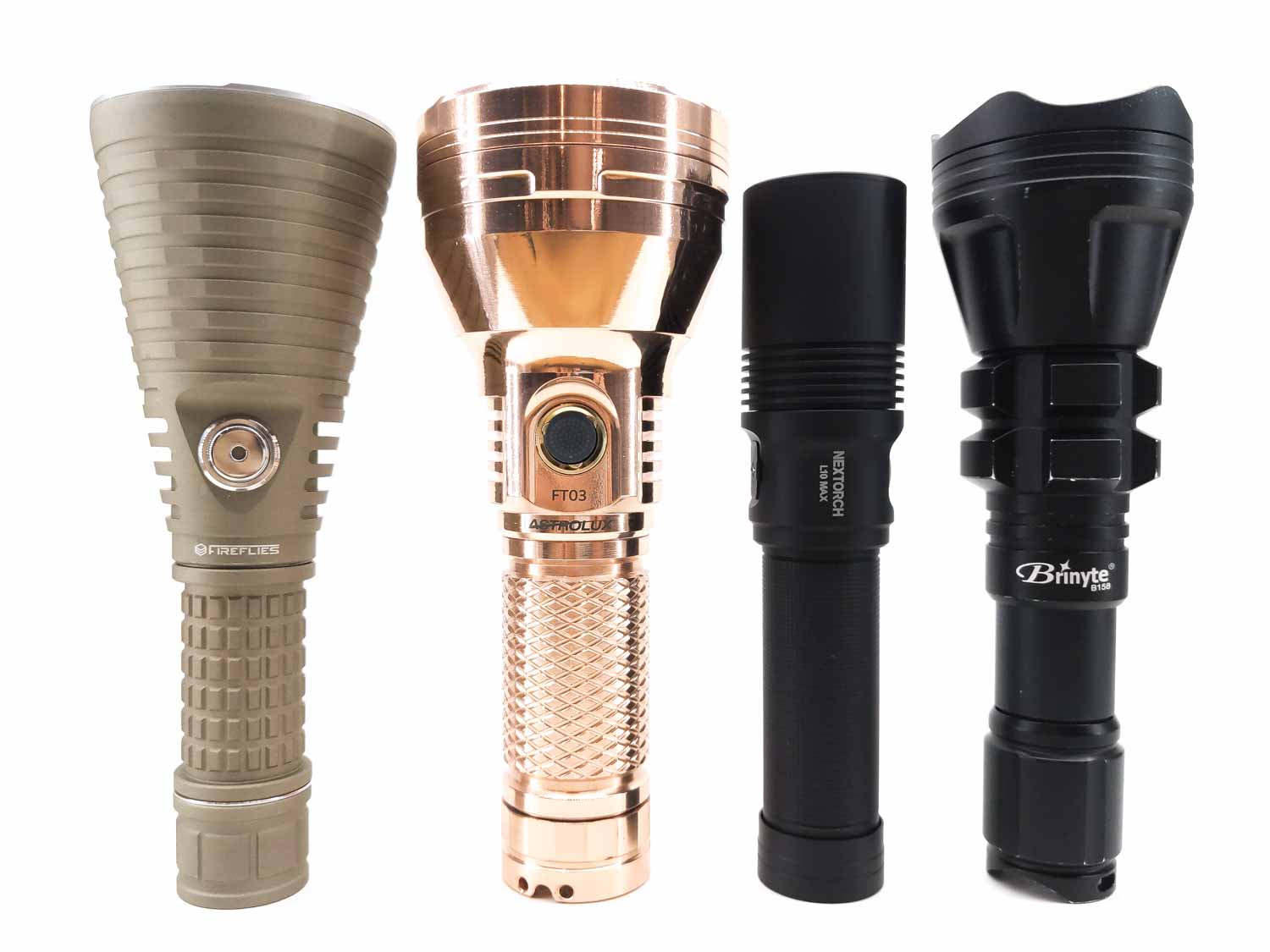
Driver & User Interface:
The NEXTORCH L10 Max has a very basic UI consisting of 3 brightness levels plus Strobe which is in the main sequence (don’t stop here, please read on).
Available modes: Low, Medium, High, Strobe
From OFF:
- Press and Hold 1 second: turns on in High mode
From ON:
- Press and Hold 1 second: turns off
- Single click: next mode (High > Medium > Low > Strobe)
Mode memory:
- No mode memory, thankfully
Shortcuts:
- No shortcuts
Low voltage warning:
- No warning, the light shuts off abruptly
Strobe/blinkies
- One strobe mode with a consistent 11 Hz frequency
Lock-out mode:
- No electronic lock-out
- Physical lock-out by twisting the tailcap
PWM
- No PWM on any mode detected with my photodiode rig
Additional info on the UI:
- When I first turned the L10 Max on, I hated the UI. Long press for on/off? Strobe in the normal rotation? Always comes on in High mode? This is a terrible UI for an EDC-type flashlight.
- But ya know what? The more I used it, I quickly became accustomed to the UI and actually ended up rather liking it (for it’s given purpose) perhaps with the exception of the long press for on/off.
- I think a lot of this comes down to the fact that you don’t use an LEP like an EDC light. You’re not going to use this for navigating around a dark house while preserving night vision or reading a book at night. You pull out the L10 Max when you want to see far away. And so how should the UI operate? By giving you High mode any time you turn the light on. It’s my first light to have such a UI but I find it actually fits the use-case pretty well.
Batteries & Charging
The NEXTORCH L10 Max ships with a NEXTORCH -branded 4800 mAh protected 21700 battery inside the light, protected with a little isolation disc. The battery is fairly long, just about 1mm shy of my Acebeam
21700 that has built-in USB-C charging. That Acebeam battery also fits, though it’s a bit tight. I also tried some flat-top unprotected batteries like a Samsung 50G and Molicel P42A and both of those fit and operated just fine, too. With springs as both ends of the light, the L10 Max is pretty flexible when it comes to batteries.
The L10 Max also has built-in USB-C charging, and even though it ships with the common USB-A to USB-C cable, I’m happy to report that it supports USB-PD (Power Delivery) charging through a USB-C to USB-C cable. I measured the charging power at 9.02 watts (1.81 amps at 4.99 volts). It charged the included battery in 4 hours and 39 minutes, stopping right at 4.20 volts. While charging, the button glows red. It switches to blue when charging is complete.
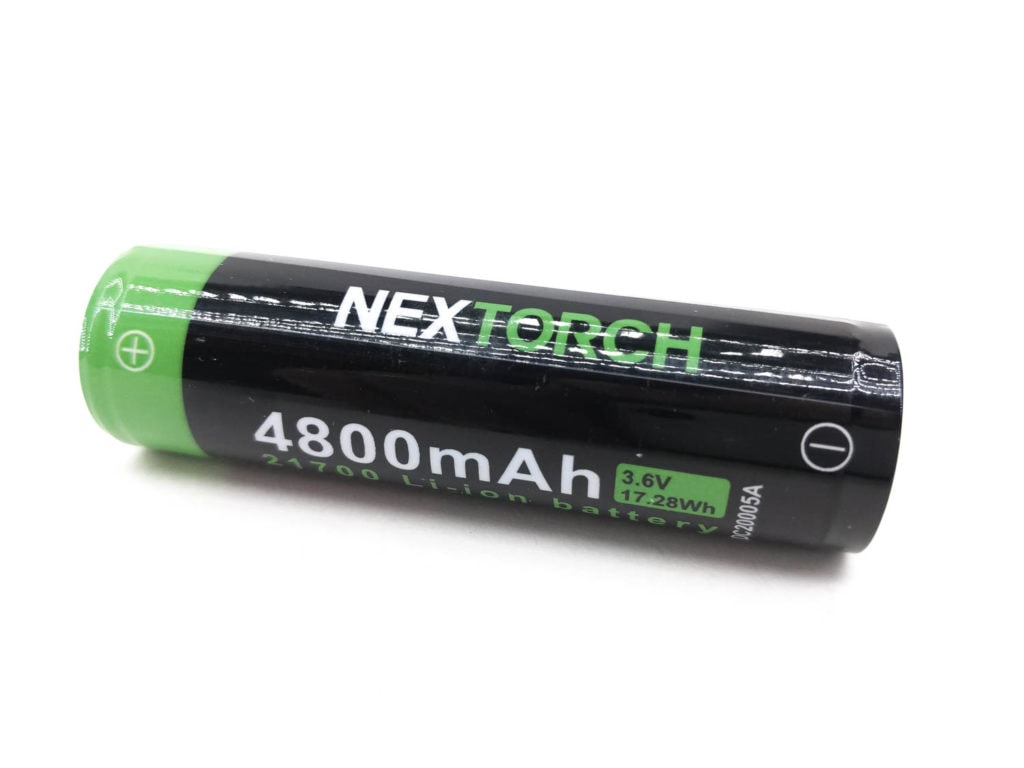
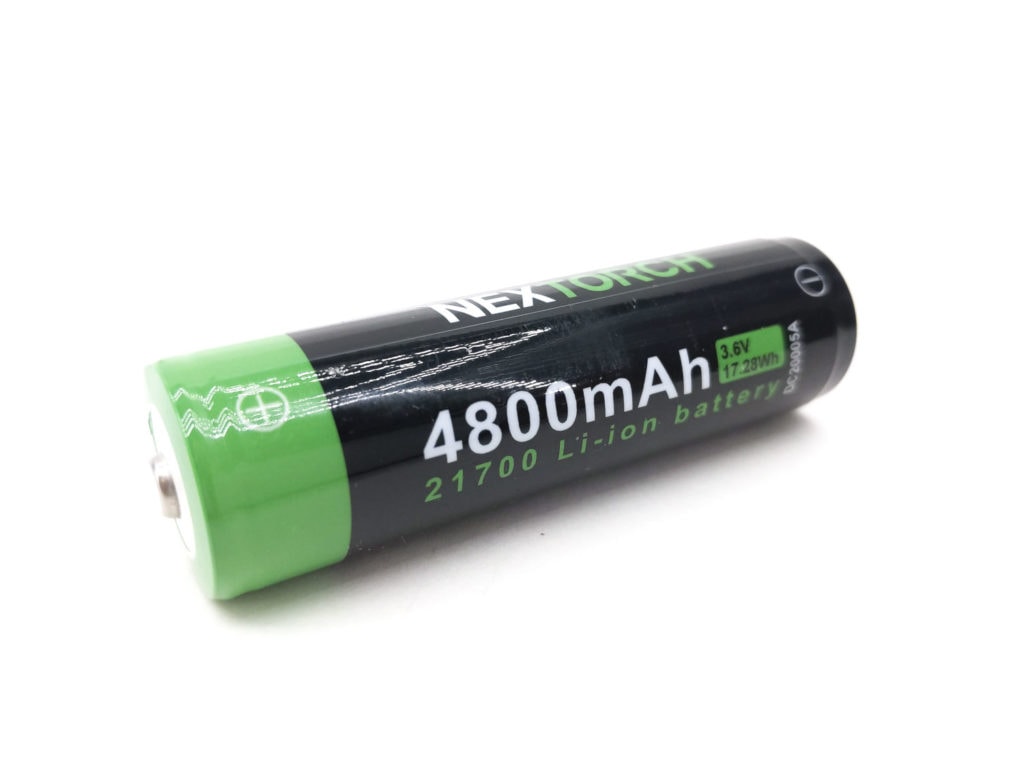
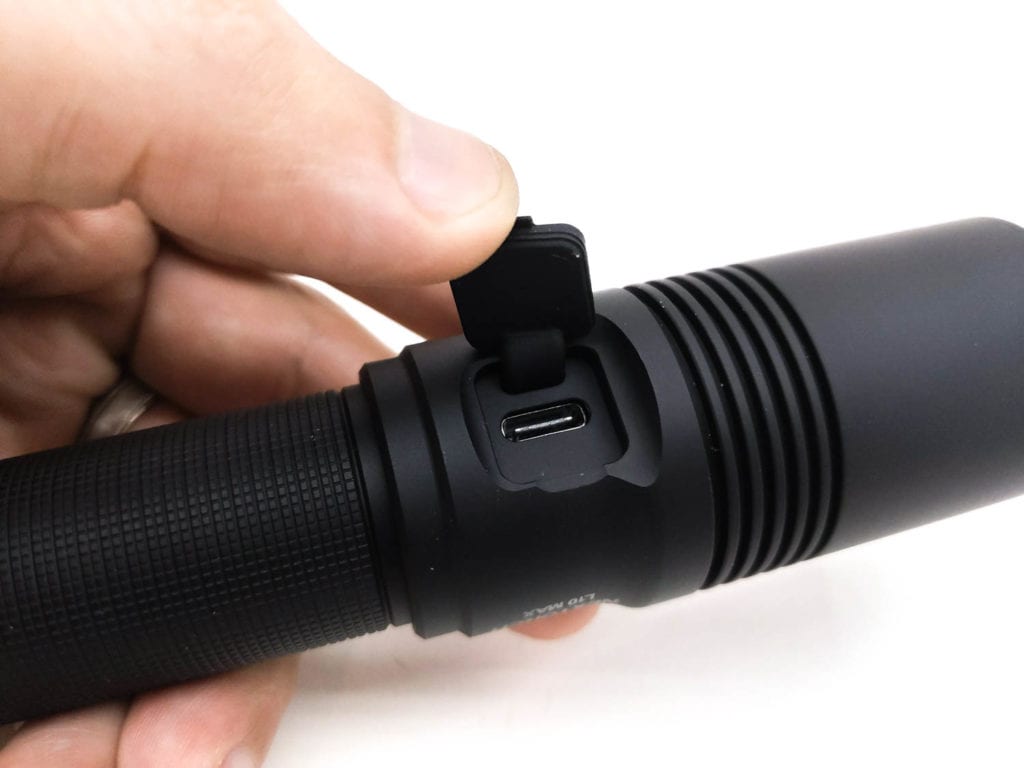
Performance
For current measurements, an ANENG AN8008 multimeter and UNI-T UT210E clamp meter were used. Lux was measured by a UNI-T UT383 BT at 10 meters. Lumens were measured in a homemade lumen tube using a TSL2591 sensor, calibrated with a Maukka calibration light. The temperature was monitored with a MLX90614 IR temperature sensor. The included NEXTORCH battery was used for testing.
Lumen measurements (for each mode)
| Mode | Amps at start | Specs | 10min | 30 sec | start |
|---|---|---|---|---|---|
| Low | 396 mA | 30lm | 29 | ||
| Med | 0.7 A | 100lm | 105 | 109 | 109 |
| High | 2.8 A | 400lm | 141 | 421 lm | 437 |
Parasitic drain:
- 6 µA – very very low!
Runtime graph
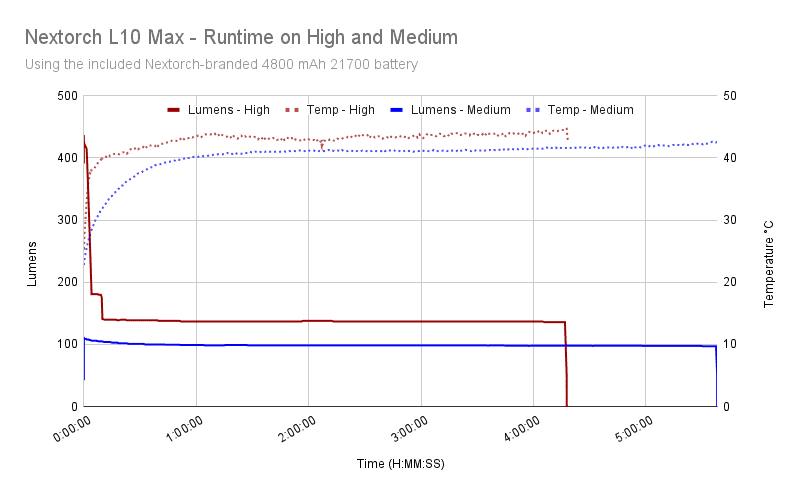
In High mode, the L10 Max started out at 437 lumens and dropped very little for the first 1.5 minutes at which time a ramp-down happened, going down to 181 lumens by the 4-minute mark. At 10 minutes, there was a small drop down to 140 lumens where it stayed for the remainder of the test. The light abruptly turned off at 4 hours and 18 minutes. The maximum temperature was a comfortable 44.7°C.
The Medium mode test was very uneventful. It turned on at 109 lumens and after a slight dip, stayed right around 100 lumens for the entire run. The light abruptly shut off at 5 hours and 37 minutes. The maximum temperature was 42.6°C.
Overall, these runtimes were nice and stable, no surprises. I wouldn’t have minded seeing High mode go a bit longer before ramping down though. The light was only 33°C when the ramp-down occurred.
Throw numbers:
For the throw measurements, I tested the L10 Max at 10 meters using my UNI-T UT383 BT and a calibration factor based on the Maukka calibration light.
| Mode | Specs | Candela measured | Meters | Yards |
| Low | 34,225 cd | 33,500 | 366 | 400 |
| Medium | 105,625 cd | 121,300 | 697 | 762 |
| High | 360,000 cd | 440,000 cd | 1327 | 1451 |
Beamshots
The farm shed in these beamshots is 100 meters (109 yards) away. Pictures were taken with my Pixel 3 using ƒ/1.8, ⅕ second exposure time, ISO200, and 5000K white balance.
- NEXTORCH L10 Max
- Convoy L7
- Convoy M21D
- Convoy 3x21A
- Mateminco MT90Mini SBT90.2
- Fenix LR50R
It can be a bit deceiving in pictures to compare this LEP against LED flashlights. Take the Convoy L7 for example. I measured nearly identical throw numbers vs the L10 Max, but it requires 6.5 times the wattage and 11 times the lumens to reach the same distance. All of that power with the Convoy L7 lights up a large area, generates a lot of heat, and requires a very large body/reflector in order to make that happen. The NEXTORCH L10 Max reaches out to the same distance with its pencil beam while sipping a lot less energy and in a form factor that could fit into your pocket.

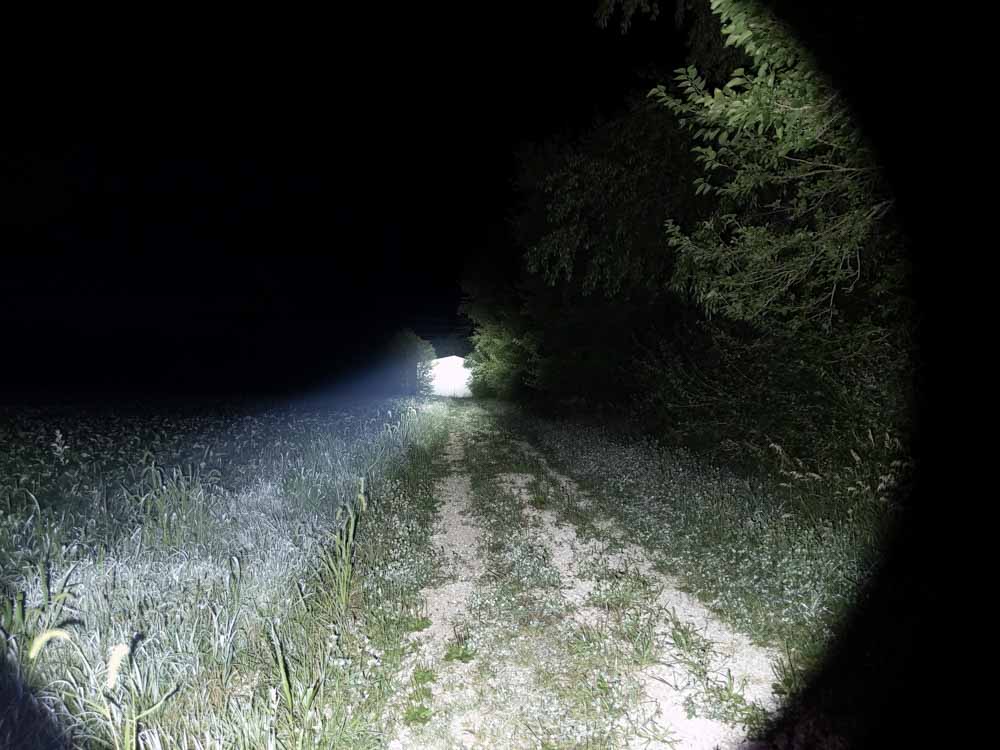

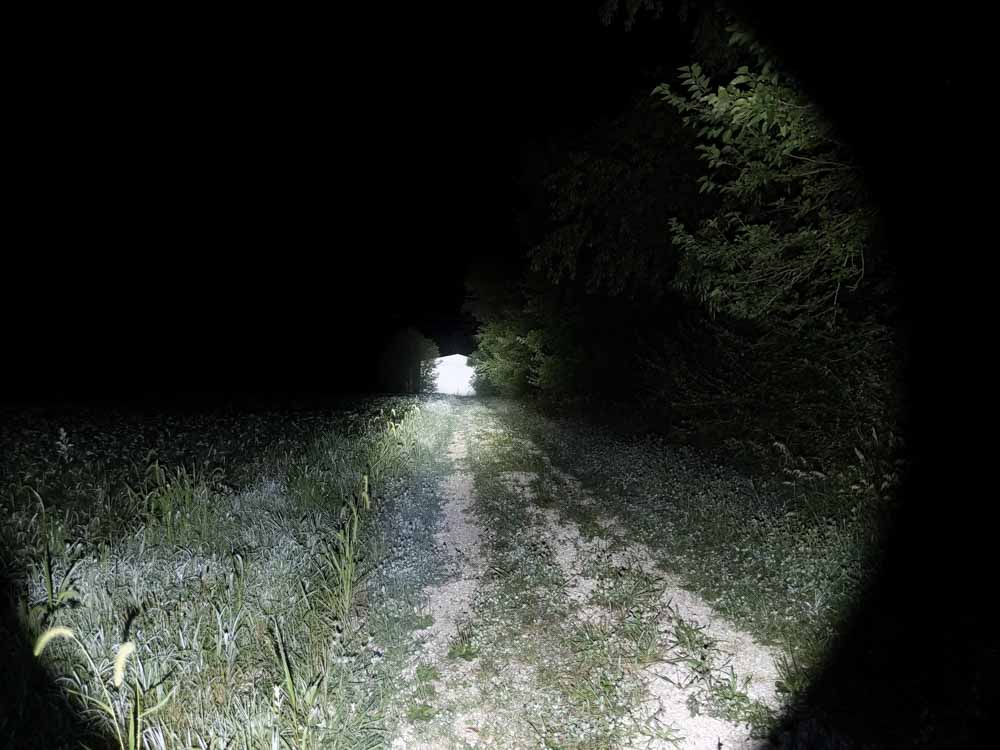
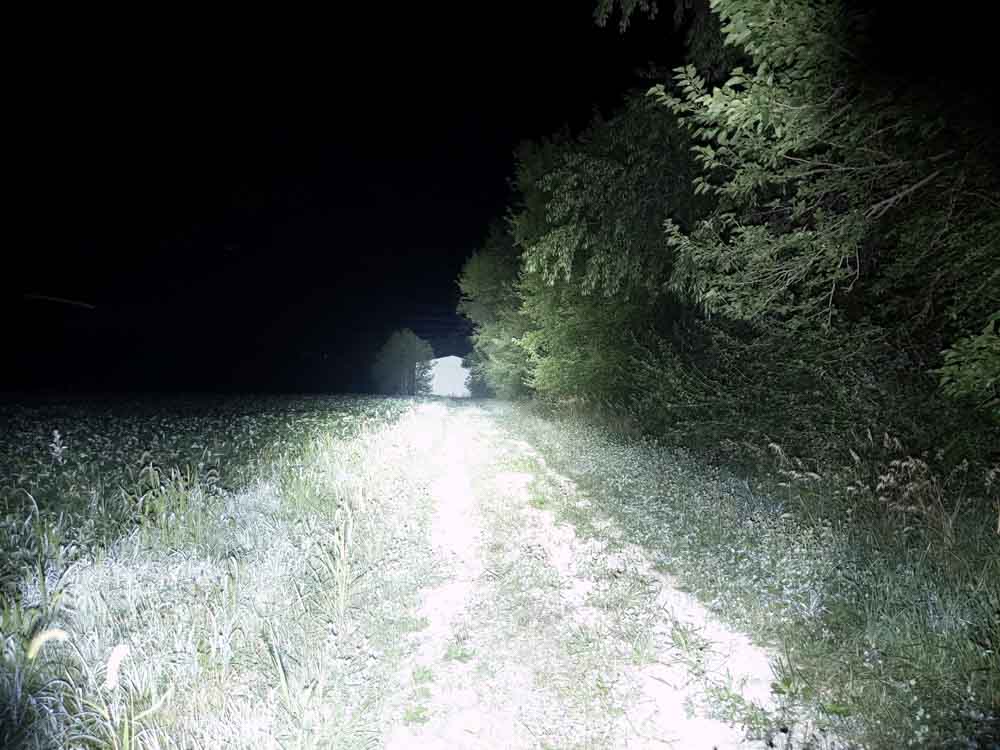

Disclaimer: This flashlight was sent to me for review at no cost by Banggood. I have not been paid to review, nor have I been holding back on problems or defects.
Final Verdict
Pros
- Throws very far for its size
- Great machining and anodizing
- Includes a good 21700 and can fit many others
- Built-in USB-C charging
- Always starts on High
Cons
- UI isn’t everybody’s cup of tea
- No pocket clip
- High ramps down after only 1 ½ minutes
Explanation on star ratings:
1: Avoid: my phone flashlight would be a better choice – 2: Poor: significant defect or issues, much better options available at the same price – 3: Average: some defects or issues – 4: Good: recommended (minor issues) – 5: Great: highly recommended

4.5 stars: ★★★★⋆
The NEXTORCH L10 Max was my first NEXTORCH and my first LEP. Honestly, I wasn’t expecting all that much from it. I’m pleasantly surprised though! The build quality is great, the light is well regulated without any signs of PWM. The UI is a bit so-so but it actually grew on me over the course of this review. I like having the capacity of the 21700 battery and the convenience of built-in USB-C charging. If you’re looking for a high-quality pocketable LEP that can reach out to 1300+ meters and not break the bank, the Nextorch L10 Max would be an excellent choice.
Buy NEXTORCH L10 Max here
For more LEP flashlights, check out our overview with the best LEP flashlights.
1lumen selects and reviews products personally. We may earn affiliate commissions through our links, which help support our testing.